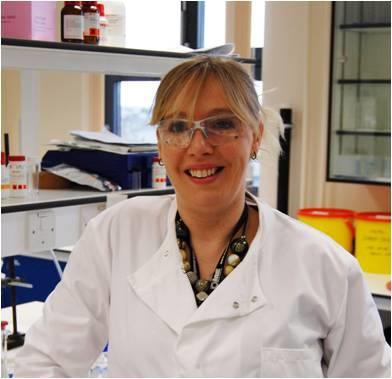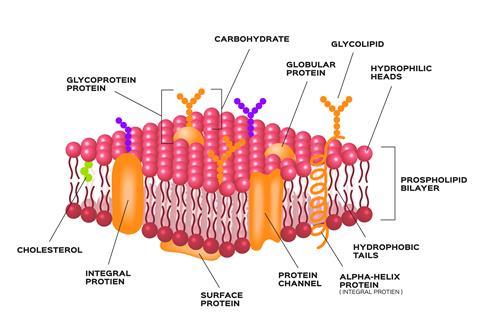Meet Annela Seddon, a research scientist who designs materials able to self-fold on demand for biomedical applications

Annela Seddon remembers the exact moment her passion for materials was ignited. ‘When I was very small, mum explained to me how a broken bone could knit back together,’ she says. ‘I thought a material that could heal itself was the coolest thing I’d ever heard and since then I’ve been fascinated by what things are made of.’
Today, Annela is an associate professor of physics at the University of Bristol. Here, she makes and studies artificial soft materials that mimic those in nature, such as cell membranes. ‘I’m particularly interested in materials that change shape,’ she says. For this, she is working to improve the technique of 4D printing. ‘The material is printed flat and then under a stimulus, such as heat or light, it self-folds to give a 3D structure,’ she explains.
Annela’s research sits at the interface of chemistry, biology and physics, and her career path reflects this. An undergraduate degree at the University of Edinburgh, followed by a materials chemistry PhD at the University of Bristol, then a postdoc in Bristol’s biochemistry department studying the folding of proteins found in the cell membrane. Next came a fellowship – held jointly between Imperial College London and the University of Chicago – where she continued to look at cell membrane structure. Then, in 2009, she returned to Bristol to join the physics department as a lecturer.
The possibilities for self-folding materials are endless, Annela says. ‘My interests are biomedical applications; for example, could materials printed flat then mould to a person’s body to assist tissue regeneration or wound healing?’
Did you have any particularly inspiring teachers?
My A-level maths teacher, who today is my mum’s bridge teacher! She has such a passion for her subject and so obviously enjoyed the process of imparting information to us and wanted us to do well.
Who inspired you to pursue a research career?
When I was a third year undergraduate, Richard Winpenny gave us a lecture on how we could use our understanding of how plants do photosynthesis to design better materials. A light bulb went off for me and I thought ’I want to do research now.’
If you could make any scientific discovery what would it be?
To create a foolproof method for crystallising cell membrane proteins. This is a bit of a dark art at the moment. I’d love to be the person who solved that because it would revolutionise drug discovery.

What keeps you awake at night?
Currently, the coronavirus. But normally, I worry about what the future holds for scientific research and scientific funding – and how my PhD students will fit into that landscape. I wonder what their careers will look like, and whether we are training them in the right way to be successful in today’s world.
What is your favourite class to teach?
Recently I’ve been doing tutorials with foundation year physics students. Teaching basics to students who don’t have a traditional background in learning has been the hardest thing I’ve ever taught. But it’s also been the most rewarding and fun. They’re a brilliant group of students and it’s made me a better educator.
What was the last experiment you ran?
I did some X-ray scattering measurements to look at interactions between the fibres in a self-assembled gel made by one of my collaborators.
What is your favourite functional material?
The cell membrane. It is unbelievably complex and subtly different in every type of cell. I’d love to be able to 3D print things that behave like cell membranes.
What’s your favourite part of your job?
Interacting with the students. When you see a student do really well, it’s a real honour to know that you’ve played a small part in getting them there.
What’s the hardest part of your job?
Applying for grants and knowing that success rates aren’t high. That you might have a great idea but maybe you didn’t communicate it well enough. It can be really hard when you keep trying and you don’t get funded.
Where do you see yourself in 10 years?
I’d really like to be doing the job I’m doing now, but have the opportunity to support more students within my research group, as well as across the university.
What do you like to do outside of the lab?
I’ve been training for a lockdown my entire life! I like to crochet, cook and bake. I like watching trashy TV (I am rewatching Glee at the moment). I also like to learn something new, and am currently teaching myself lacework and guitar.
More resources
Inspire learners and discover more ways chemists are making a difference to our work with our video job profiles.
Add context and inspire your learners with our short career videos showing how chemistry is making a difference.









No comments yet